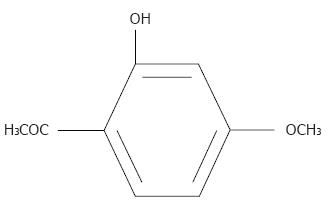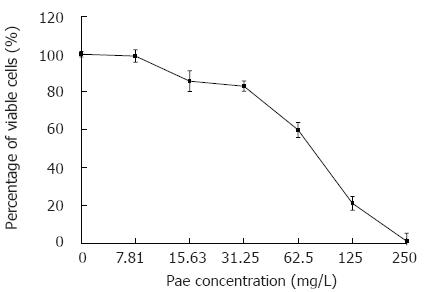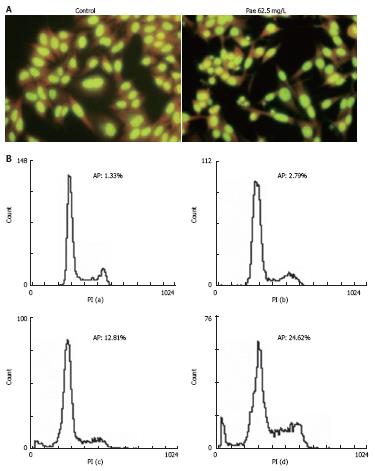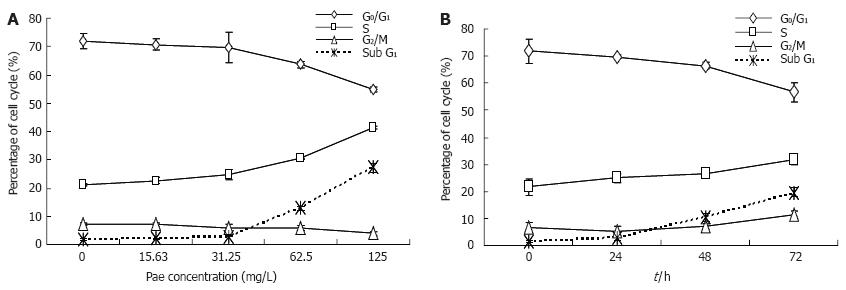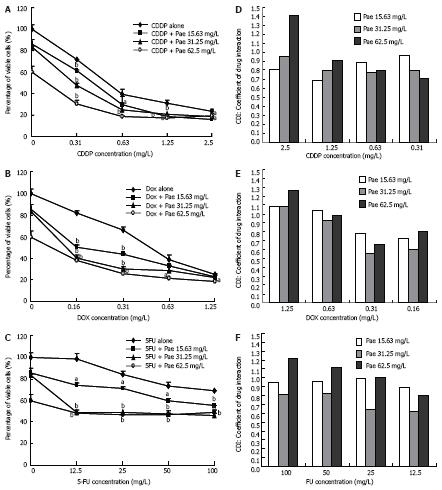Copyright
©2007 Baishideng Publishing Group Co.
World J Gastroenterol. Jan 14, 2007; 13(2): 250-256
Published online Jan 14, 2007. doi: 10.3748/wjg.v13.i2.250
Published online Jan 14, 2007. doi: 10.3748/wjg.v13.i2.250
Figure 1 Structure of Pae (2-hydroxy-4-metho-xyacetophenone).
Figure 2 Dose-dependent cytotoxicity of Pae in HepG2 cells.
Data are presented as mean ± SE (error bar) of triplicate experiments.
Figure 3 Effect of Pae on apoptosis in HepG2 cells.
A: Morphological changes of HepG2 cells treated with Pae 62.5 mg/L (× 320); B: Flow cytometry analysis of HepG2 cells treated with Pae for 24 h. (a). Control; (b).Pae 31.25 mg/L; (c).Pae 62.5 mg/L; (d).Pae 125 mg/L.
Figure 4 Effect of Pae on cell cycle in HepG2 cells.
The distribution of cells in the sub-G1, G0/G1, S, and G2/M phases of the cell cycle were calculated and plotted. (A): Dose-dependent curve of cell cycle distribution induced by Pae. (B): Time-dependent curve of cell cycle distribution induced by Pae 31.25 mg/L. Each point represents triplicate experiments. Bars ± SE.
Figure 5 The synergistically antiproliferative effect of Pae combined with CDDP (A), DOX (B), or 5-FU (C) on HepG2 cells.
The dots represent the concentrations of chemotherapeutic drugs as 0 on the dose-response curves which means treatment with Pae alone. Data are presented as mean ± SE of triplicate experiments. aP < 0.05, bP < 0.01, vs chemotherapeutic drugs alone. And CDI for the combination treatment of Pae with CDDP (D), DOX (E), or 5-FU (F) on HepG2 cells.
- Citation: Xu SP, Sun GP, Shen YX, Wei W, Peng WR, Wang H. Antiproliferation and apoptosis induction of paeonol in HepG2 cells. World J Gastroenterol 2007; 13(2): 250-256
- URL: https://www.wjgnet.com/1007-9327/full/v13/i2/250.htm
- DOI: https://dx.doi.org/10.3748/wjg.v13.i2.250









